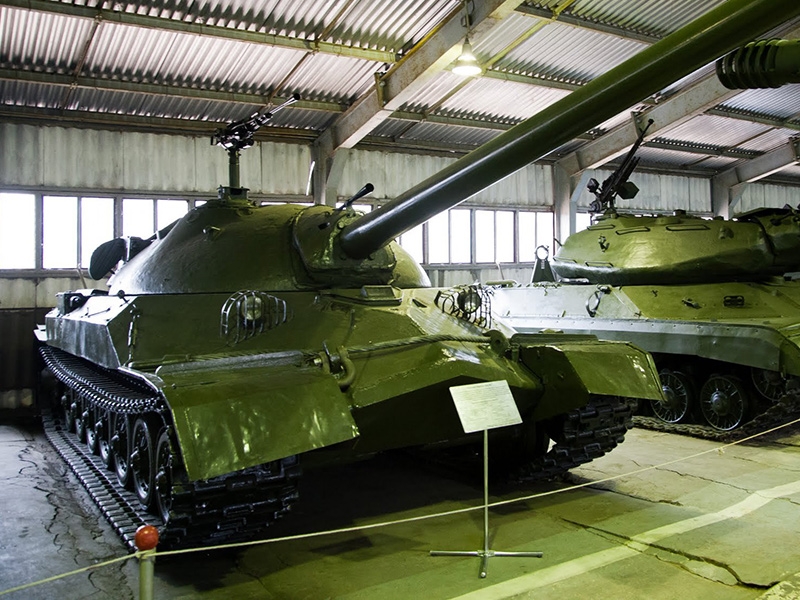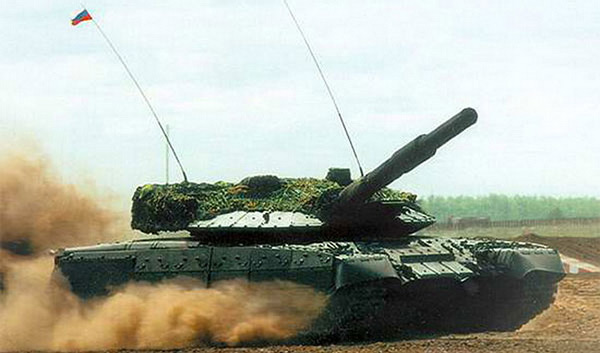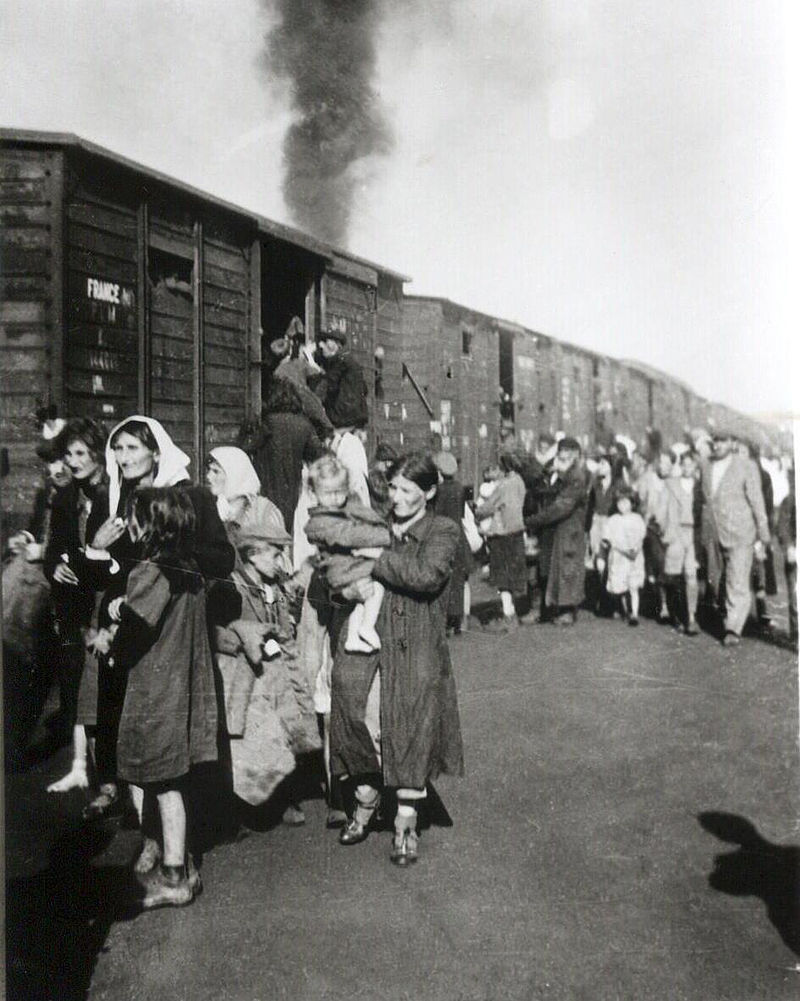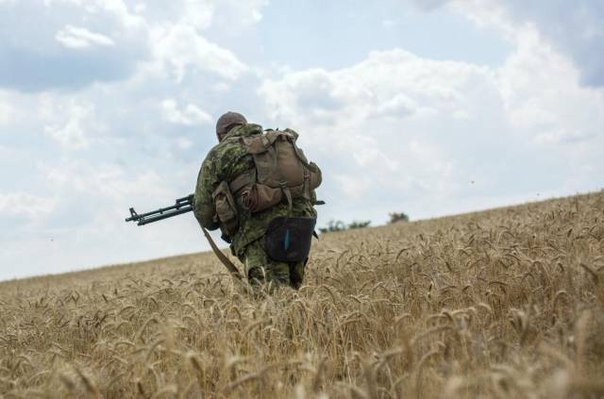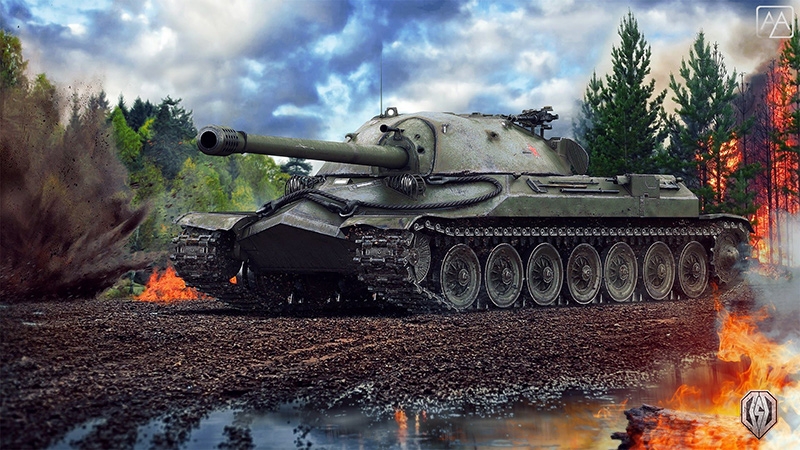
IS-7 (An object 260) - experienced Soviet heavy tank. It developed in the years 1945-1947, limited edition of six prototypes and a small number of pre-production machines, produced in 1949 year. like its predecessors, designed to break the enemy's powerful defensive bands, IS-7 had good armor protection. The most powerful tank of his time and the most difficult among Soviet tanks. The Soviet Army was not taken, but many of the first used this tank technical solutions have since been successfully used in production machines.
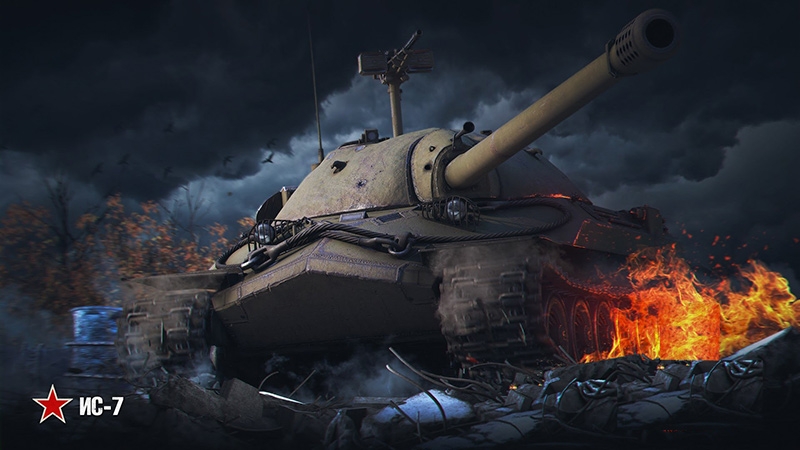
Creating one of the last heavy tanks of the Soviet Union - 7 IS - began in 1944 year. In the second half of the 44th team of designers led by ZH.YA. Kotin set out to summarize the whole experience, obtained in a combat operation of heavy tanks and make on its basis a new armored vehicle. true, authorities did not share this enthusiasm: People's Commissar for Tank Industry VA. Malyshev did not support the idea. However Kotin was persistent and began to promote the idea through the head of the NKVD LP. Beria. People's Commissar of Internal Affairs interested in the proposal and assist top jobs. Furthermore, winter '45 was deployed three projects, which ultimately led to the creation of IP-7 heavy tank of the domestic. According to Russian tradition, all new projects were named "Object", but different numbers. These were the "Object 257", "258" and "259". Three different tank had both advantages, and disadvantages.
After the analysis of the created projects and selection of useful solutions best achievements were collected in the "Object 260", which began in the summer of the 45th development. Alternatively, the tank was the title index IS-7 - this machine was designed to continue the line of heavy tanks, "Joseph Stalin". Using the experience of recently graduated from war, designers under the direction of Kotin able to perform all the engineering work in a few months. Already 9 September was approved by the full package of working drawings. The considerable merit in this belongs leading designer H. Shamshurynu. In addition to the overall coordination of the project, he was one of the initiators of the creation of a highly specialized design teams; this approach to development has allowed to carry out all work in relatively short periods. Besides, division into groups helped to create and put into the design of IP-7, a number of interesting innovations, previously not been used in the Soviet tank building.
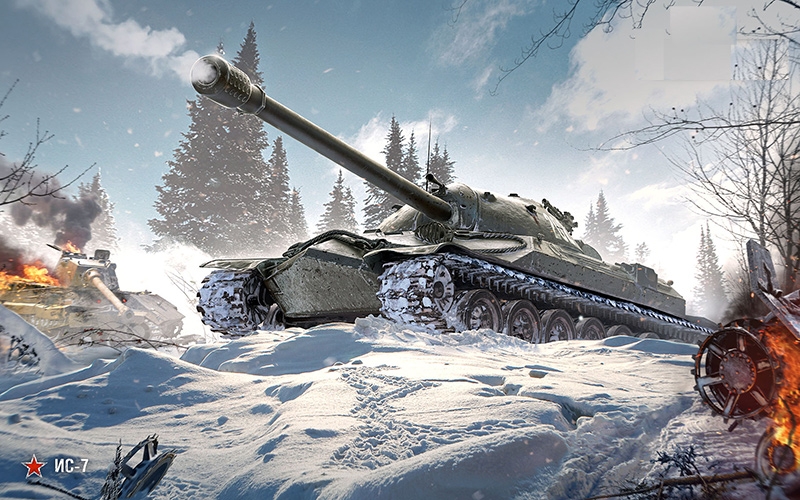
The least was the original design of the armored corps. Rolled and molded armor sheets welded into a unitary structure. Thus a number of armor plates installed under great angles, 60 °. At the frontal and side armor thickness to 150 millimeters of tilt angles promised significant improvement in the level of protection. The frontal part of the tank, As in previous heavy tanks, It was made on a "pike nose", but, unlike other armored, It was a little smaller and not so protruded. Tower "Object 260" is to further develop the unit to IS-3 tank. Cast tower had a thickness of 50 mm roof up 210 in the front part. It comes complete with a 350-millimeter gun mask. Inside the booked volume housed a crew of five. Jobs four of them were placed in the fighting compartment and the tower.
In the course of designing the engine-transmission group and chassis also has been applied a few know-how, though not always uniquely successful. For example, in the early stages of the project were invited to place inside the engine compartment additional tanks. Because of the tilt-board sheets, I formed there is no volume of employment, in which it was impossible to place any units. In this regard, the free space under the boards and in the sub-pedestal was occupied by fuel. Soon, however, from the tanks near the engine had to give up - even before the construction of the prototype revealed, that the vibrations from the engine and transmission can break welds tanks and lead to fuel leakage. Under certain circumstances, it is threatened by fire. It is worth noting, that "Object 260" still received interesting innovation, associated with the fuel system. The thing is, it was the first domestic tank, which used soft fuel tanks. Due to the simplicity of manufacture of complex shape containers, increased efficiency in the distribution of internal volume, and the total amount of diesel fuel increased from 750 l IS-3 tank up 1300 l in the IS-7. Besides, almost double the power reserve.
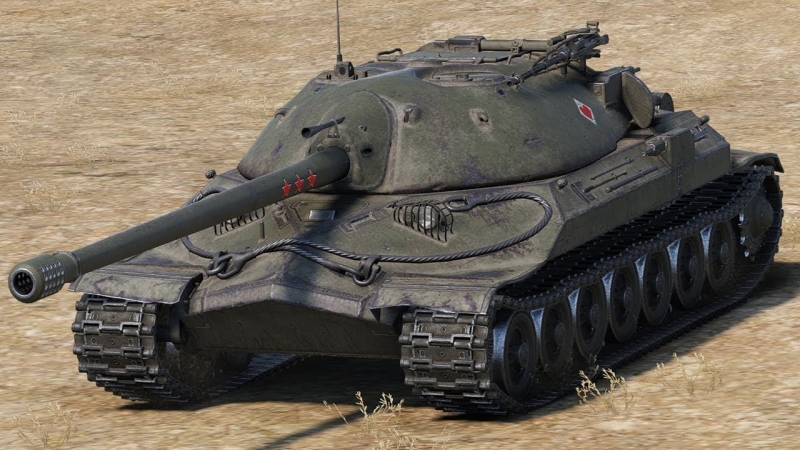
As for the engine and transmission, their appearance was formed not at once. Initially, during the "260" project considered four options once configuration and layout of the engine-transmission group. As the diesel engine proposed QP-30 in power 1200 HP. or two B-12 600 HP. each. To interact with each engine offers two powertrain options. In the first case, it was the usual mechanical mechanisms, Second - the electrical system. So, Spark of two motor generators intended for QP-30 323 kW each, and for the B-12 - two of 336 kW. Two traction motors in all versions with electric transmission were identical and had the equivalent power 315 HP. Regardless of the used transmission, powerful engines require a considerable amount of. It got to the, that at the bottom of the tank is simply no room for the required length torsion. To maintain the required characteristics of the suspension were first applied in domestic practice TN. torsion beam. Instead of one long rod amortization carried a stack of seven, had smaller linear dimensions and cross-section. This had a positive impact not only on the Ride, but at the height of all armored vehicles. Another change in the habits of the original has been associated with road wheels. Unlike previous tank design bureau ZH.YA. litter, EC-7 was equipped with large-scale rollers, which did not require the installation of additional supporting rollers - upper part of the tracks "ran" right on track roller. It is worth noting the original design of the tracks. Cast tracks new tracks have rubber mount, whereby the wear tracks and noise while driving was significantly reduced. Besides, casting shoe is less costly stamping, although in this case, additional processing was required technological holes. And yet on casting costs and "to file" are significantly less, than previously. In the same time, before starting the production of prototypes of the tank had made significant changes to the original idea for, to cheaper manufacturing process does not interfere with the production of mass-produced armored vehicles.
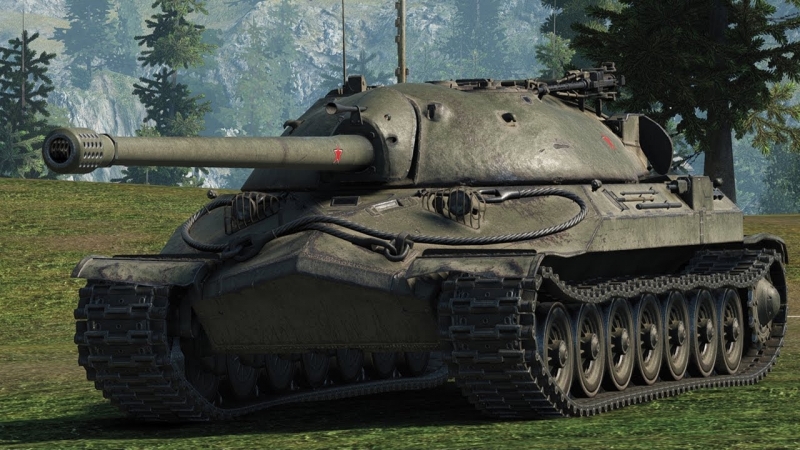
At the beginning 1946 , the "Object 260" was significantly modified, but the project name remained unchanged, which sometimes causes confusion. The reason was a series of improvements identified deficiencies previously applied solutions, as well as problems at subcontractors. Plant №77 could not bring to mind the Spark of the two 600-horsepower engines, which is why it was necessary to look for alternative solutions. Likewise was the case with a specialized tank on diesel 1200 Horse power. Because of these problems of the Leningrad Kirov Plant designers had to urgently communicate with the plant №500 and in a short time to adapt to tank diesel Aviation AH-300. Under the name TD-30, this engine was installed on the first prototypes of IP-7.
8 September 1946 , the first built by the "Object 260" of the updated draft was submitted to the test. Until the end of the same year, he managed to pass on landfill about a thousand kilometers. Maximum speed 66-tonner on the highway exceeds 60 kmh. On the broken road-7 IS accelerated to half speed. For heavy tank was more than good. Beam original torsion suspension as positive feedback earned. 25 December 46th was sent to the landfill second prototype. A few months later, the workers collected two LB armored housing, intended for test firing. Metal hull and turret stood caliber shells hit all German anti-tank guns caliber to 128 millimeters. tests also were performed with the firing of the guns 130 mm C-70. In the test report said, that contact does not affect the state of the dogs, It was inside the target tanks. Yet there are certain doubts, that the crew could keep quiet, or even performance after being hit by a 130-mm shell, even without penetration of armor.
By that time, when going to the first copies of "Object 260", Artillery Central Design Bureau together with Perm plant № 172 has developed and produced a test batch of 130-millimeter tank guns C-26. Cannon removable breech and muzzle brake slit provided 33-kilogram projectile velocity at 900 meters per second. In laying tank was placed 31 separate loading projectile. Wedge bolt semi-automatic with a guiding system, and chambering mechanism allowed to bring guns to rate 6-8 rounds per minute. Nevertheless, for various reasons from the gun C-26 soon abandoned. AT 1946 in the same year under the leadership of VG TsAKB. Grabin was created tank gun S-70 the same caliber. In the same year, three prototype tools have been collected, and a test batch of fifteen copies to put th 1948. Rifled gun C-70 had higher characteristics, than the C-26. So, caliber armor-piercing projectile leaving the barrel at a rate 1030 m / s, allowing a distance of a kilometer to the punch 280 mm homogeneous armor. Podkalibernыy projectile, in its turn, I had a speed 1800 m / s and at the same distance 350-mm sewn barrier. Inside rearranged under the C-70 crew compartment was placed on three dozen shells and liners.
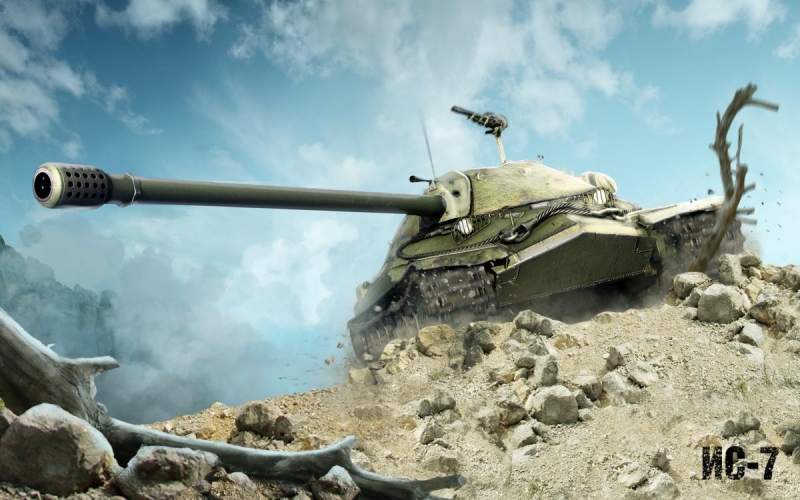
Beginning with the third instance IS-7, gun S-70 was his main weapon. Additional armament at this stage had a total solid number of machine guns: 14,5-CPV mm and two 7.62 mm RP-46 were installed in the same package with the gun and the role played paired arms. Another four RP-46 machine guns were placed at the sides of the hull and turret, two on the body intended for shooting onwards, the other two on the tower - Back. Finally, eighth gun (CPV) It was placed on the tower and used as zenith. Subsequently, all the "Object 260" variants of the quantitative composition of guns will not change, although not the RP-46 will be installed on some machines, and SGMT. In the same time, gun installations design was raw and it took a lot of improvements.
Before the production of a test batch of four machines has undergone further changes powerplant. TD-30 diesel engine replaced the M-50T. This marine diesel engine had 12 cylinders and maximum power 1050 Horse power. Of course, it was less, than that demanded doubles, but no choice - the creation of new engines went very slowly and without much success. Notably, when installing the engine M-50T useful early developments of sheaf flexbeam: with their help it did not take much to alter the internal volume of the engine compartment.
for 1948 Year of the shops of the Leningrad Kirov factory came four new tank IS-7 to C-70 guns. After some factory tests have transferred their testers from the Ministry of Defense. test E. Kulchyckyj, which has been entrusted to begin sea trials of new tanks, very positive about the "Object 260" characteristics. According to him, even at maximum speed 60 kilometers per hour and heavy tank easy to listen to the levers: "Machine completely submissive to the driver '. Further runs under the control of the E drivers. Kulchyckyj, AT. Lyashko and K. Bucket fully confirmed all reviews, and helped raise a number of important information regarding the recommended modes of engine operation. Trial shooting also took place, generally, successfully. The problems started later.
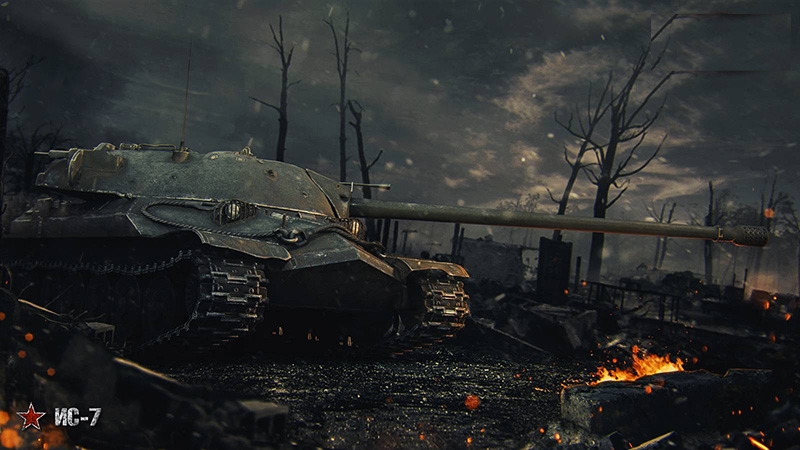
First, during the shelling of antitank weapon projectile ricocheted from side down and hit the roller mount. He fell off and bounced on decent distance. obviously, that such contact in a combat situation is very rare. But only a few decision-makers began to speak maliciously on "colossus with feet of clay". Following an unfortunate incident led to the loss of one of the prototypes. During the run of the polygon engine caught fire. Automatic fire extinguishing system twice served in the engine compartment quenching mixture, but to extinguish a fire could not. third trip (the maximum margin - the three portions of the mixture) did not have. The crew was forced to leave the tank and watch, he burns. When investigating a fire revealed, several fuel tanks tanks prototype for weight savings were made of rubber, instead of metal. For this reason, the capacity to quickly burned and literally poured "oil" in the fire.
But still, looks like, not these incidents have led to the sad fate of the tank IS-7. Running and combat characteristics "Object 260" was, least, not less, than that of foreign armored vehicles of the same class. The last EC-7 prototypes weighed 68 tonnes, that strongly disliked military. Not every bridge of the Soviet Union could withstand such a load. Consequently, much worse mobility units, Armed with heavy tanks. The same problem occurred with the carriage by rail. The weight of the transport infrastructure limitations subsequently affect the development of the whole of Russian armored vehicles, Firstly, heavy tanks. We have to admit, foreign tank builders too are faced with this problem. In the 70s the British and German engineers have developed a promising tank MBT-80 and found a very interesting solution to the problems:
” As with the design, "Chieftain". one of the most critical was the weight problem. Specification of the general staff limited the weight value in perspective of the tank 54,8 t (the mass of the tank "Chieftain» Mk.5), but even during the design study of the project MW-80 British experts came to the conclusion that it is impossible to gain armor while maintaining the new weight of the tank at the level of the masses "Chieftain» Mk.5. The mass had increased to 60-62 t, In this case, there was an opportunity to strengthen reservation frontal hull and turret, as well as the sides.”
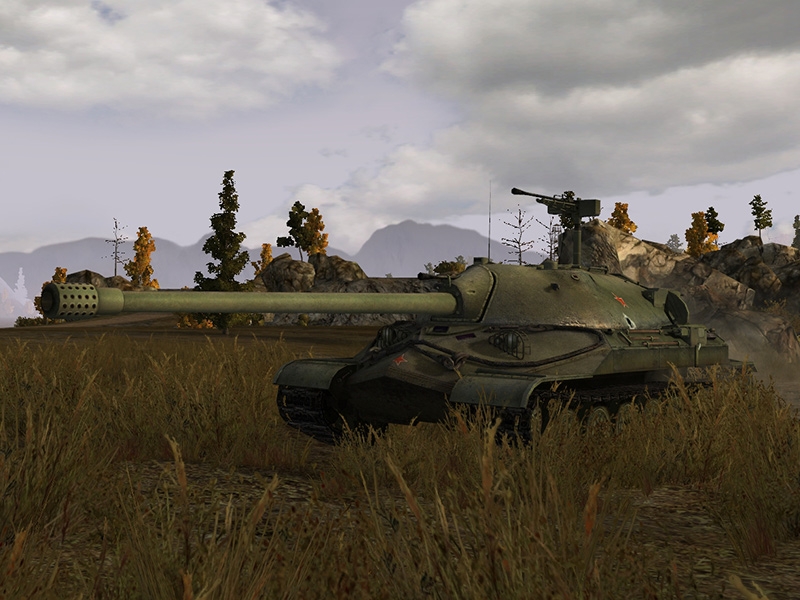
MVEE engineers as a justification for the possibility of increasing the mass of the thesis put forward a small difference between 50- and 60-ton tanks. So, when equal power density and a pressure on the soil mobility, average speed, injectivity and permeability will be about the same. One of the criteria, limiting tank weight, is the capacity of road bridges. British analyzed the distribution in the ETO engineering structures, limiting mobility tanks; it turned, that most of the bridges designed for a load of 20 t, that is, they fail with the same success and a 50-ton tank, and under the weight of the tank 60 t, bridges and load-carrying capacity 50 and 60 t "smeared" across Europe roughly evenly. As a result of this kind of research and analysis we were able to convince the military to raise the bar for the upper limit to the required weight 60- 62t.
A number of historians note of tank, the military from the beginning belonged to the 7-ICs with a certain share of suspicion, and eventually only reinforces skepticism. maybe, the reason for this became a heavy tank IS-4 failure, which had excellent booking, but too much of a combat weight and, Consequently, poor permeability. Another interesting explanation of the refusal of adopting the "Object 260" refers to changes in views on future war. In the late forties and early fifties formed the view, according to which in the major wars of the near future will need a rapid and massive deployment of a large number of armored units. Besides, nuclear attacks in the first hours of the war could easily knock out a third of the whole armor. obviously, that hard, maloprisposoblenny to traffic and road tank, with all its advantages, not suitable for such conflicts.
Finally, production of a new heavy tank could seriously affect the pace of construction of the developed types. Leningrad and Chelyabinsk plants could not cope with this task, no sacrifice. Therefore, the "Object 260" project has been closed. Until our time the most difficult domestic tank survived only in one copy, which is exhibited in the museum Tank Kubinka.
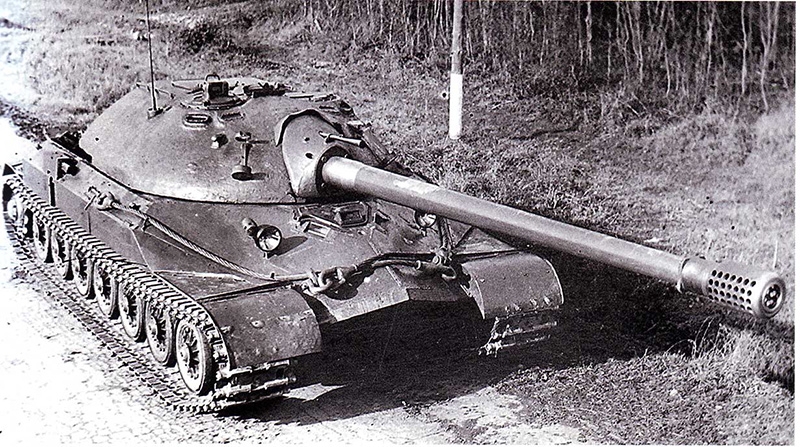
IS-7 on tests
Design
Although 7-IP is largely the development of heavy tank IS-3, on it was used a lot of new solutions, much ahead of his time. classic layout of the tank, separation of management combined with martial. The length of the radome, housed a driver, It managed efficiently and conveniently build the separation of management. Pointing the gun with machine guns in the mask easier electric power, controlled with remote gunner. Due to the weight of solid projectiles tank crew added a second chargeable and consisted of five people: driver mechanic, commander, gunner and two loaders. In order to facilitate and speed up the work, of ammunition 25 shots, stowed in the stern of the tower, fed are conveyed.
Armor hull and turret
EC-7 armor housing welded from rolled homogenous armor plates of different thickness. The front part was made of three sheets with large angles of inclination according to the "pike nose" of the 150-mm plates, for greater rigidity bead complex shape with reverse bias produced at the top (not welded, and bend under pressure) of two parts - upper sloping thickness 150 mm and thickness of the lower concave inwardly 100 mm. Aft part consisted of the bottom member 100 mm in thickness and strongly inclined 60-mm top member. Stamped top and bottom plate had a thickness 30 and 20 mm, respectively.
Tower tank - cast, quadruple, very large, but low and high angles of inclination armor. Armor tower variable thickness, from 94 mm in the turret to 210 with an overall slope 51-60 degrees in the frontal, guns mask thickness reached 355 mm.
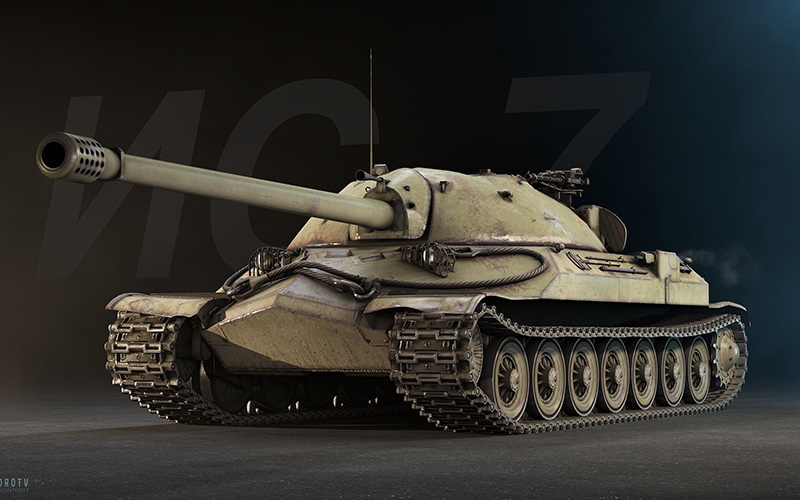
weaponry
The main armament is a powerful 130mm rifled gun tank C-70 with a barrel 57,2 caliber and muzzle velocity of 33.4-kg armor-piercing projectile 900 m / s developed on the basis of a 130-mm naval gun Marine. The gun had a vertical wedge semi-shutter, mono mesh was equipped with a muzzle brake, fire control system and the loading mechanism with the electric drive, by type of marine artillery. fire control system when firing the gun automatically zooms in accordance with the position of the sight and the shot. Ammunition gun was 30 shots separate-case loading with subcaliber armor-piercing and high-explosive projectiles, Placed on the floor of the crew compartment and in the niches nadgusenichnyh. In addition to guns, weapons-7 IP were 8 pulyemyotov, of them 2 - 14.5 mm and KPVT 6 - 7.62mm SGMT. One KPVT SGMT and two were installed in the mask gun, second KPVT mounted on the turret on the roof of the tower, of the remaining four SGMT, two were attached on the sides of the turret to fire back, and two - on the sides of the body on the shelves nadgusenichnyh shooting forward. All guns, except paired with a gun, equipped with remote electric and induces the inside of the tank. Ammunition consisted of machine guns 400 14,5-mm cartridges and 2500 7,62-mm.
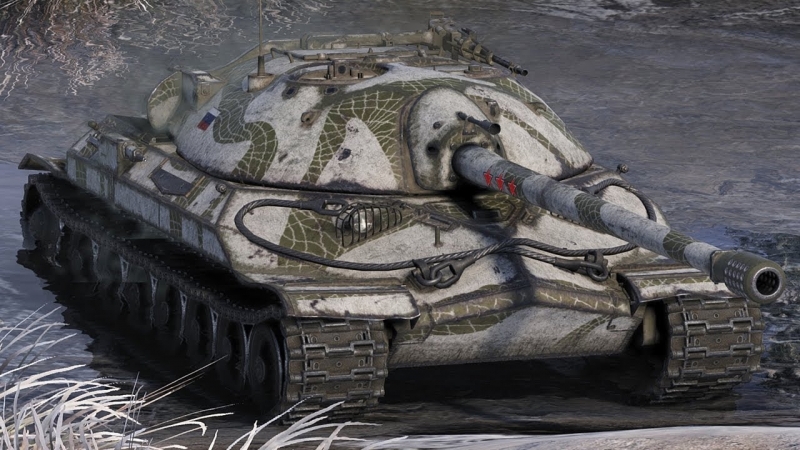
Engine and transmission
EC-7 were equipped with V-shaped 12-cylinder four-stroke diesel engine cooling ejection M-50T (Tank T) power 1050 HP, who was a tank one marine diesel engine.
Transmission on the first prototype consisted of a six-speed gearbox and a two-stage planetary rotation mechanism, but on the second series of prototypes and pre-series machines installed eight-planetary gearbox and other rotating mechanisms.
Chassis
Suspension independent rollers, torsionnaya. Chassis each side consisted of 7 dual rollers with a metallic rim and placed in the balancing hydraulic shock absorbers. Rear drive wheels, engaging tracks lantern. For the first time in the Soviet tank building caterpillar has been applied to the IC-7 with rubber mount.
based machines
– An object 261 - Soviet design heavy 152mm self-propelled artillery;
– An object 263 - Soviet project of the heavy 130-mm self-propelled artillery.
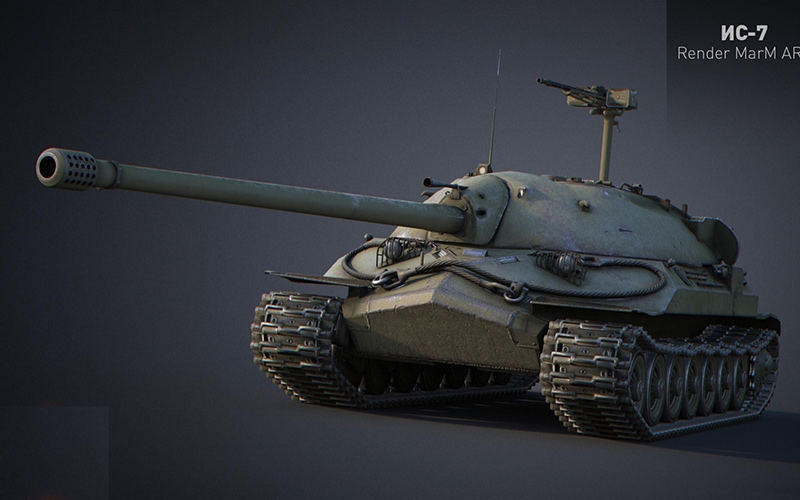
The performance characteristics of IP-7
Crew, pers.: 5
developer: LCO
years of production: 1946—1949
The number of issued, PC.: 6 running prototypes (2 PC. – sample 1946 of the year, 4 PC. – sample 1947 of the year)
The layout: classical
All IS-7
– 68 tonnes
IS-7 Sizes
– body Length, mm: 7380
– Length with gun forward, mm: 10000
– housing width, mm: 3400
– Height, mm: 2480
– Clearance, mm: 450
IS-7 Armor
– Type broni: steel cast and rolled
– housing forehead (top), mm / city.: 150/65°
– housing forehead (through), mm / city.: 150/50°
– body board (top), mm / city.: 150/45°
– body board (through), mm / city.: 100/40-65°
– housing feed (top), mm / city.: 60/55°
– housing feed (through), mm / city.: 100/15°
– Bottom, mm: 20
– corps roof, mm: 20
– tower forehead, mm / city.: 210/51-60°
– gun mantlet, mm / city.: 350/0°
– board towers, mm / city.: 150/30-65°
– tower feed, mm / city.: 94
– tower roof, mm: 50
Armament-7 IC
– Caliber guns and stamp: 130-mm C-70
– gun type: nareznaya gun
– barrel length, calibres: 57,2
– gun ammunition: 30
– Shotgun: 2 x 14.5mm KPVT, 6 x 7.62mm SGMT
Engine IS-7
– engine's type: M-50t
– Engine power, l. from.: 1050
IS-7 Speed
– Road speed, kmh: 60
– Speed over rough terrain, kmh: 32
– Cruising on the highway, km: 300
– power density, l. p. / m: 15,4
– suspension type: individual torsion
– Unit ground pressure, kg / cm²: 0,97
– Gradeability, city.: 30
– fording, m: 1,5
Foto IS-7
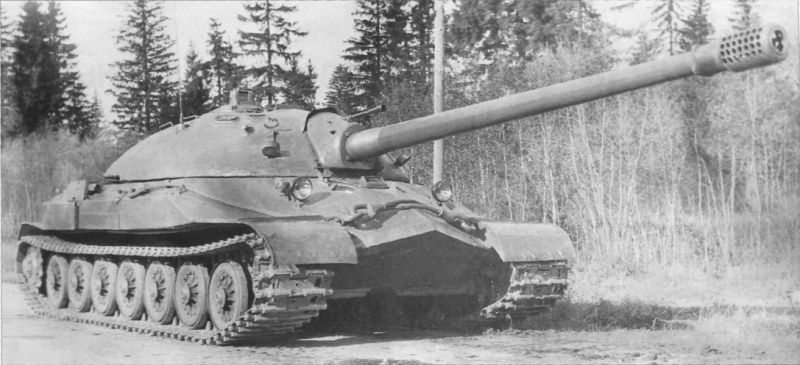
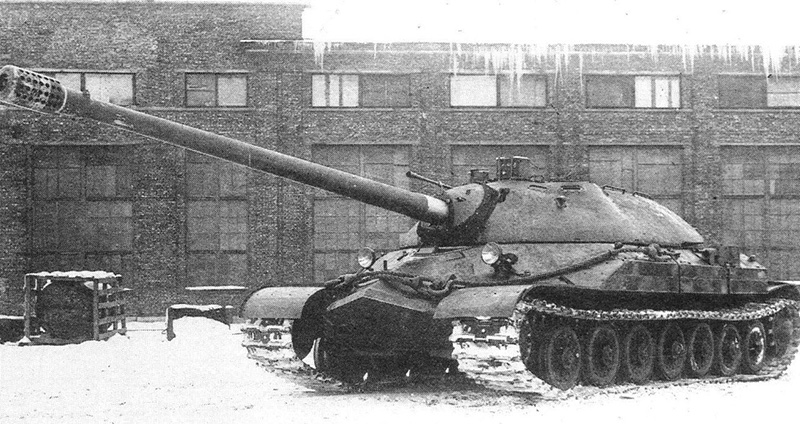
Prototype 1948 in the courtyard of the factory. On this machine, there are no guns in the stern of the tower and antiaircraft
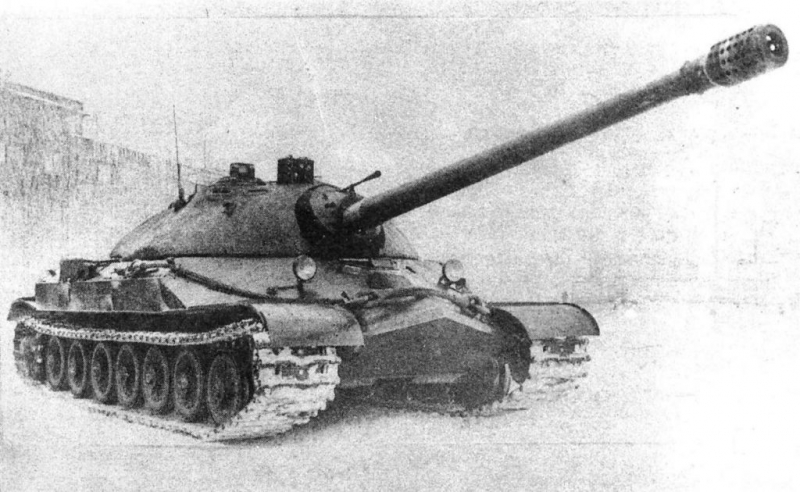
Prototype 1948 in the courtyard of the factory. On this machine, there are no guns in the stern of the tower and antiaircraft
IS-7 armored museum to z. Cuban
